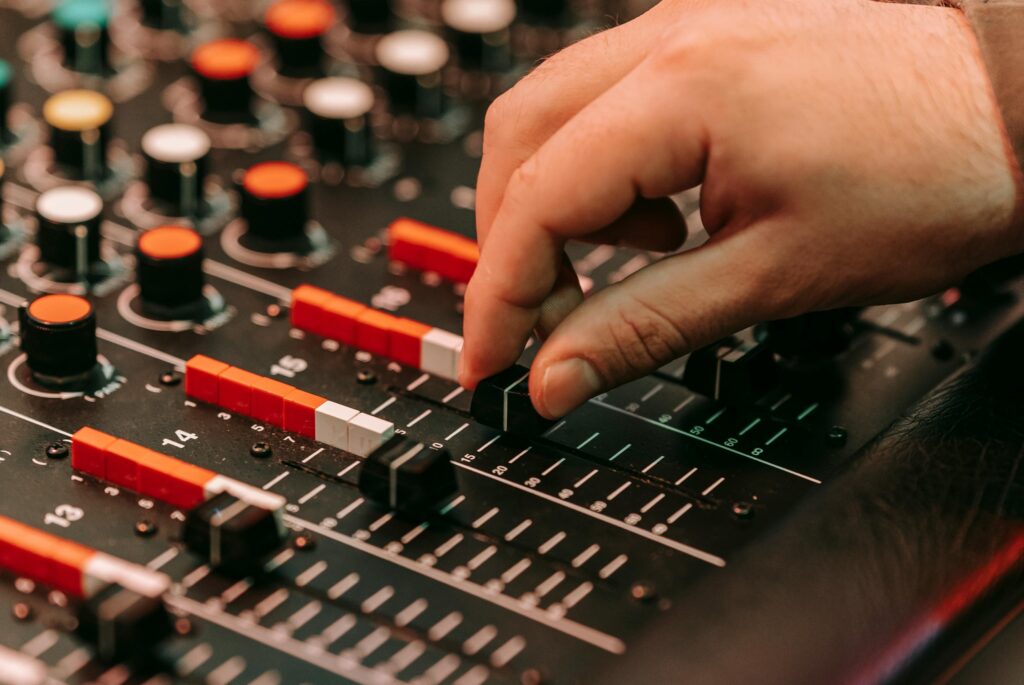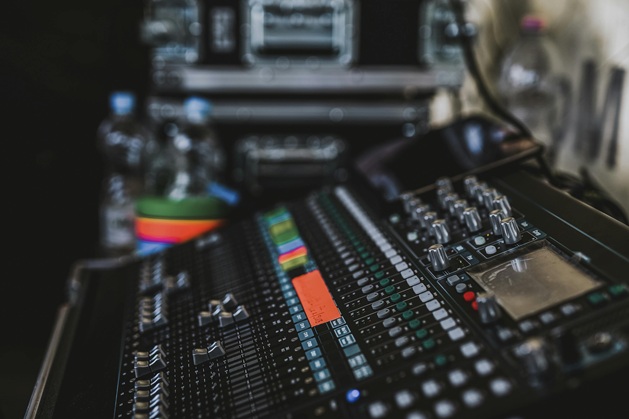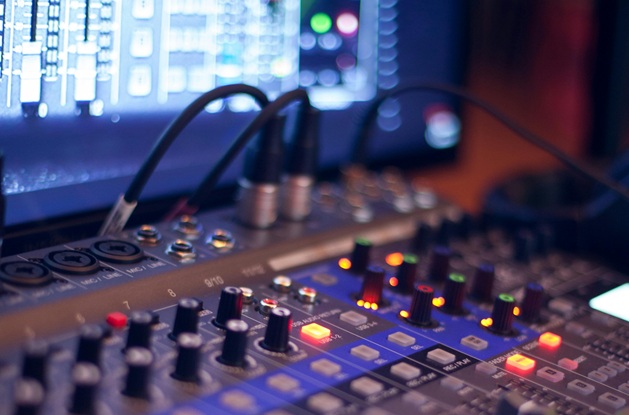The device at the center of every great sound setup brings all the elements together—vocals, instruments, effects—and blends them into one smooth, polished mix. Whether you’re recording in a studio or running live sound, it’s what makes everything work in harmony.
This essential tool is known as an audio mixer, and it gives you full control over volume, tone, and signal routing. With several types available, each designed for different needs and setups, choosing the right mixer can make all the difference in achieving clear, balanced sound.
What Does an Audio Mixer Do?

Said in simple words, this is an electronic device designed to mix audio signals, which are mainly used in sound recording systems. However, they can also be used in sound reinforcement and reproduction systems. This equipment piece can successfully balance different input audio signals and adjust the tone quality to create an output audio that is easy on the ear.
Types
Generally speaking, these instruments are classified into three categories based on their internal structure, allowing you to find a responsive audio mixer that creates the perfect balance and gives the clearest and cleanest sound ever.
Analogue
These mixers are classic and affordable mixer solutions designed to adjust both the volume and tone of input audio signals. Practice shows that using these mixers is super straightforward since most of the control knobs and faders are placed on the top panel. This makes it easy for you to understand the signal flow and the audio’s state.
Digital
Unlike the analog ones, these instruments can do everything on their own. They can process input audio signals, adjust their volume and tone with digital signal processing technology, all at once. These mixers surely are a more advanced version than the analog ones because they offer different tone control options, which is something impossible to be applied with the help of analog mixers.
An important thing you should know about them is that these mixers can store the positions of faders and knobs, and recall them. This unit will remain compact and functional even if the number of channels increases, which isn’t the case with analog mixers. The only thing you should have in mind when choosing a digital one is that setting it up requires more experience and knowledge than setting up the analog one, so if you don’t feel competent doing it, seeking help is mandatory.
Powered
Powered mixers are different from the rest of them as they basically represent analogue mixers with built-in power amplifiers. This precisely explains the fact why sound can be played with the mixer once connected to speakers. In those times when the same equipment is connected all the time, you can use such a mixer by simply turning the power on.
Channels
Output Channels
Mixers can output a range of different channels of audio, like sending audio to main speakers designed for the audience, and sending audio to monitor speakers on stage designed for the performers. If not sure what some of the output channels mean, have a look at this general guide that will help get a clear picture of everything.
- STEREO OUT – A function used to send signals to the audience, aka the final stereo we hear.
- AUX SEND – A function used to send signals to the performer’s speakers and other external devices.
- MONITOR OUT – A function used to monitor speakers that are used when mixing audio.
- GROUP OUT – A function used for outputting several signals at the same time.
- REC OUT – A function used for connecting with devices that have the option to record.
- PHONES – A function used for attaching and connecting headphones.
- AUX Bus – A function that helps in sending signals to external devices.
- GROUP Bus – A circuit used for controlling several channels at the same time.
- STERE Bus – A circuit used for combining each input that comes into the mixer.
Input Channels
It’s said that the input channels are quite important in a mixer, especially the number of input channels, because this shows the number of microphone and musical instrument signals that can be handled.
When considering the number of input channels in a mixer, you should pay attention to how many of those input channels are designed for microphones, will the input channels accept stereo signals, and whether these input channels are monaural. All of this is important for having a mixer that meets your needs.
Microphone Input Channels
Given the fact that audio signals picked up by a microphone are very weak, it’s said that they must be amplified with the help of the mixer’s head amplifier – GAIN. All you need to do is simply connect to the MIC connector.
Line Input Channel
In those times when the input channel has both MIC and LINE inputs, you can use the LINE connector. And, in those times when the same connector is used for both the microphone and LINE, you can reduce the level by using one function – the PAD button. That way, the audio won’t be distorted.
Mixer Functions

Equalisers
Equalisers on mixers have the purpose of adjusting the tone of each channel. While some of these equalisers have 2 bands, others have 3 bands designed to adjust the low, mid and high sounds.
HPF (High Pass Filter)
This feature is designed to cut unnecessary low frequencies at the input. Generally speaking, HPFS are used for hi-hat, snare, and vocals to cut unnecessary low frequencies in order to create a cleaner sound.
Pan
The pan feature is designed to adjust the output ratio when playing audio from left and right speakers. Generally speaking, this feature is used to widen the sound image, and also to position each input relative to their location on the stage.


